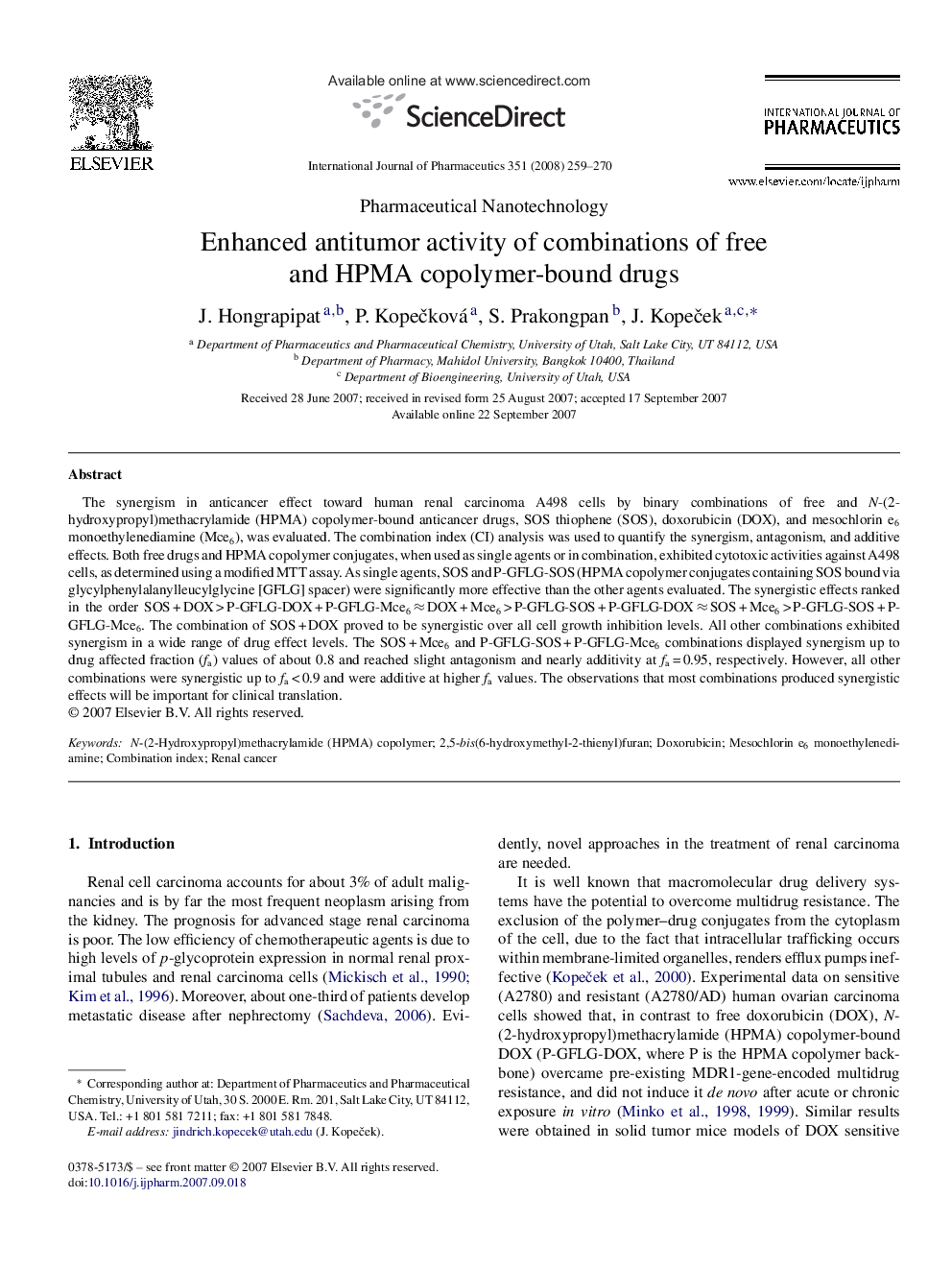| Article ID | Journal | Published Year | Pages | File Type |
|---|---|---|---|---|
| 2505643 | International Journal of Pharmaceutics | 2008 | 12 Pages |
The synergism in anticancer effect toward human renal carcinoma A498 cells by binary combinations of free and N-(2-hydroxypropyl)methacrylamide (HPMA) copolymer-bound anticancer drugs, SOS thiophene (SOS), doxorubicin (DOX), and mesochlorin e6 monoethylenediamine (Mce6), was evaluated. The combination index (CI) analysis was used to quantify the synergism, antagonism, and additive effects. Both free drugs and HPMA copolymer conjugates, when used as single agents or in combination, exhibited cytotoxic activities against A498 cells, as determined using a modified MTT assay. As single agents, SOS and P-GFLG-SOS (HPMA copolymer conjugates containing SOS bound via glycylphenylalanylleucylglycine [GFLG] spacer) were significantly more effective than the other agents evaluated. The synergistic effects ranked in the order SOS + DOX > P-GFLG-DOX + P-GFLG-Mce6 ≈ DOX + Mce6 > P-GFLG-SOS + P-GFLG-DOX ≈ SOS + Mce6 > P-GFLG-SOS + P-GFLG-Mce6. The combination of SOS + DOX proved to be synergistic over all cell growth inhibition levels. All other combinations exhibited synergism in a wide range of drug effect levels. The SOS + Mce6 and P-GFLG-SOS + P-GFLG-Mce6 combinations displayed synergism up to drug affected fraction (fa) values of about 0.8 and reached slight antagonism and nearly additivity at fa = 0.95, respectively. However, all other combinations were synergistic up to fa < 0.9 and were additive at higher fa values. The observations that most combinations produced synergistic effects will be important for clinical translation.
